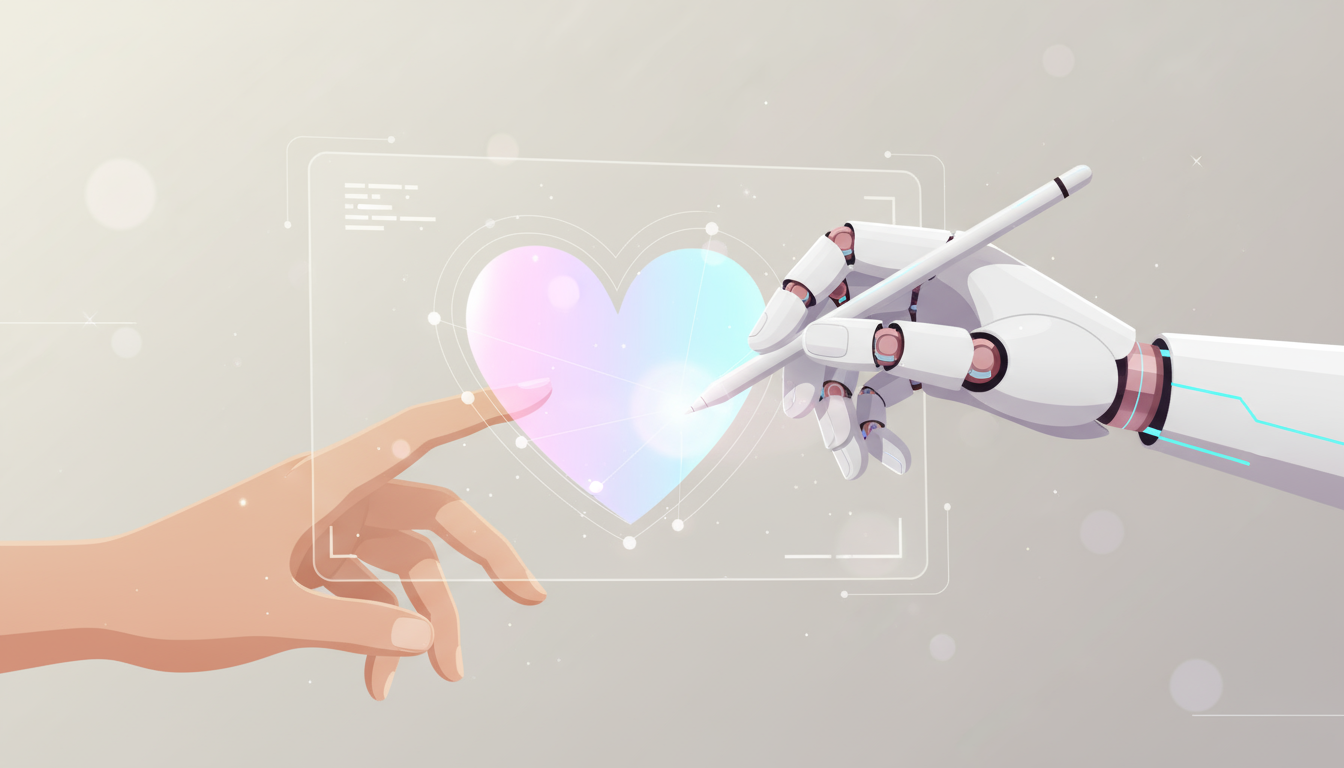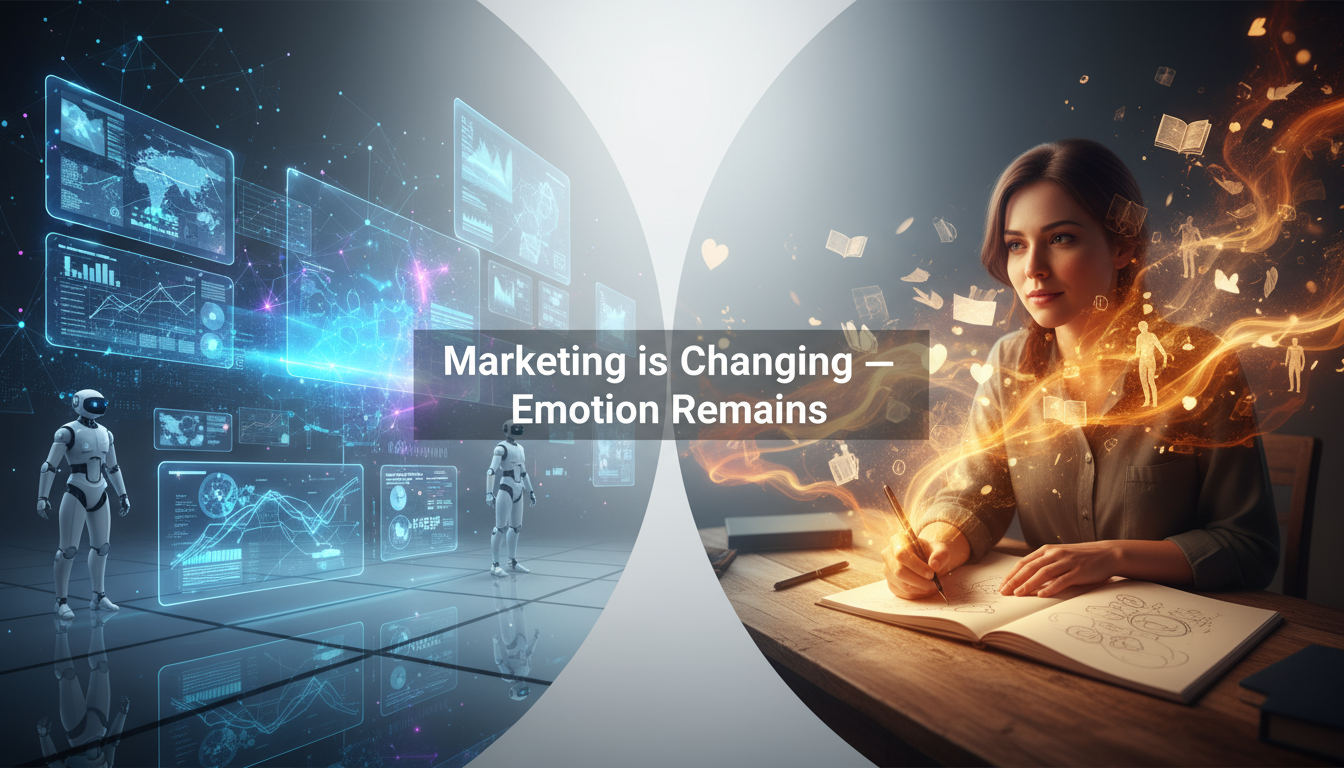In the fast-moving world of marketing, one thing is clear: the tools and tactics are transforming fast. Artificial Intelligence (AI) is rewriting how we target, engage, personalise and measure. But underneath all that disruption, the heart of marketing remains unchanged: emotion, connection, story. This post explores how AI is changing marketing — and why the fundamentals of emotional impact are more critical than ever for agencies like yours (hi CreGenie!) doing creative campaigns that convert.
Why AI is the new marketing engine
First, let’s talk about what AI is doing right now in marketing — so you, as a strategist and creator, can understand where the opportunities and constraints lie.
AI enables hyper-personalisation. According to the thought piece from INSEAD: modern AI doesn’t just segment by demographics; it begins to understand emotional landscapes, even interaction speeds, mouse movements, tone-of-voice, and adjusts marketing accordingly.
AI expands efficiency and scale. As one article puts it: content production, campaign iterations, visual generation are all faster, cheaper and more flexible thanks to generative tools.
AI enables more responsive, real-time marketing. Think chatbots that sense frustration and shift tone; it’s no longer only static campaigns — it’s dynamic journeys.
The rise of “emotion-AI” or “feeling AI” is a major theme: systems that attempt to read sentiment, facial expressions, voice tone, to adjust marketing in the moment.
What this means for your work at CreGenie
For you, as a creative strategist working on ad-films, storytelling, systems for lead generation:
- You can leverage AI to speed up ideation, generate variations, test emotional hooks faster.
- You can use data + AI to segment and customise for emotional profiles, not just demographic ones.
- But: you must retain the human creative insight — the story, the feeling, the empathy — because machines alone won’t fully “feel” the way your audience does.
So what stays the same? The emotional fundamentals of marketing
While the tools are changing, the underlying human truths remain. Here are fundamentals that don’t change — in fact, they become more important.

1. Story > Shout
Consumers still remember brands that move them emotionally, not just those that shout features. In a study: story-based branding had 98% recall, 67% said emotional attachment impacted buying.
Your campaigns at CreGenie thrive on narrative — plot twists, emotional hooks, human insight. That remains your competitive edge.
2. Empathy & trust
Regardless of how slick the AI, people connect with brands when they feel seen, heard, understood. A “brand voice” that is authentic wins. Emotional intelligence (EI) + human creativity make up for what machines still lack.
If you craft creative that shows real human dilemmas, hopes, fears, then you’re tapping fundamentals that AI alone can't replicate.
3. Emotion drives action
Yes: features, value propositions, urgency matter — but at the end of the day, choices are often emotional (“I feel good about this brand”, “I trust this team”, “This makes me part of something bigger”).
Building emotional impact is what lifts awareness to conversion, and loyalty beyond a one-time purchase.
4. Human creative control + story architecture
Even as AI creates variations, you still need a guiding creative direction, a story structure, a human insight that the AI doesn’t know. The machines can execute, but you provide the idea, the emotional anchor, the strategic “why this will resonate”.
The sweet spot: Merging AI’s power with emotional fundamentals
Here’s how you can position your agency (CreGenie) to leverage the best of both worlds:
Use AI as a tool, not a replacement
- Use AI to analyse emotional signals in audience data (sentiment, tone, patterns) → but you interpret the insights and craft the story.
- Use AI to generate multiple creative variations quickly → but you pick and refine the ones that best align with your human-centred narrative.
- Use AI to automate outreach and qualification → but you preserve personalised touches (voice, human recognition, empathy) in your lead-gen systems.
Lead with emotion, anchor with data
- Begin your campaign scripts with the emotional tension, the human truth you’re addressing: “What if you felt like no one sees your brand?”
- Then overlay data & AI-powered targeting: who is feeling that, when are they most receptive, what channel/mood are they in?
- In your automation systems: use psychological triggers like social proof, self-identity, storytelling rhythm — then plug in AI to deliver that message at the right moment.
Elevate the “creative pilot” model
Your 7-Day Creative Pilot connects perfectly here:
- Day 1–2: Human ideation — define emotional hook, narrative arc.
- Day 3–5: AI assisted production — generate variations, optimise formats.
- Day 6–7: Test + analyse → refine message based on what emotional tone moved early feedback.
This positions you as “smartly creative (backed by process)”.
Beware the pitfalls
- Don’t over-rely on AI’s claim to “understand emotion”. Research cautions that machines still struggle to interpret and act on human emotion accurately — misuse may backfire.
- Watch for “AI-washing” — leveraging AI just as a buzzword without real creative substance. That erodes trust.
- Keep authenticity alive. If the audience senses you’re just running a machine-driven campaign with zero human soul, the emotional connect will fail.
What this means for D2C brands, startups, small businesses
Given your client mix (D2C brands, startups, small business), here’s how the shift matters:
- Budget efficiency: Smaller brands benefit from AI’s scale (faster content, cheaper production) — which means you can deliver premium visuals & messaging at realistic budgets.
- Niche & micro-community targeting: You can identify emotive segments (not just broad demographic buckets) and speak to them human-to-human.
- Authenticity matters more than ever: These brands often win when they feel genuine and lean. The emotional narrative can differentiate more than a big budget.
- Automated experience = human feeling: For lead generation, automation is great — but ensure the experience still “feels human”, you build rapport, you give an emotional reason to convert.
A practical checklist for your next campaign
Here’s a short checklist you (Vaibhav at CreGenie) can use when designing your next campaign:
- Define the emotional arc: What feeling are you triggering? (desire, relief, belonging, fear of missing out)
- Map the human story: Who is the protagonist (could be your customer), what’s the conflict, what’s the resolution?
- Overlay AI-enabled insights: What emotional data or signals exist? When is your audience most receptive? What channels?
- Generate creative variations: Use AI tools for speed but vet for emotional resonance. Pick top 2-3 that feel human.
- Automate outreach + lead system: Build the system that delivers the message, qualifies leads, nurtures — but ensure your voice/personality in the touchpoints.
- Measure emotional response: Beyond clicks & conversions — what about sentiment, brand recall, shareability, community response?
- Iterate: Use the data, refine the emotional tone, switch up message if needed.
- Ensure authenticity & transparency: Be clear, be human — don’t pretend AI-emotion-reading is flawless; let your creative mastery shine.
Final thoughts
Yes — marketing is totally changing with AI. The tools, the speed, the precision, the channels — all evolving. But if you forget the fundamentals of emotional impact, you’ll lose not just in conversion — but in connection, brand loyalty, meaning.
For you at CreGenie, this is ideal: you’re already about smartly creative, emotionally resonant campaigns backed by process. Leverage AI to enhance your scalability and operational edge — but lead with story, with emotion, with human insight. That synthesis is the real advantage in 2025 and beyond.
With this mindset: you’re not just chasing the “new tool” — you’re leading the new era of creative marketing. Which fits your brand anthem perfectly: The Virat Kohli of Advertising.
